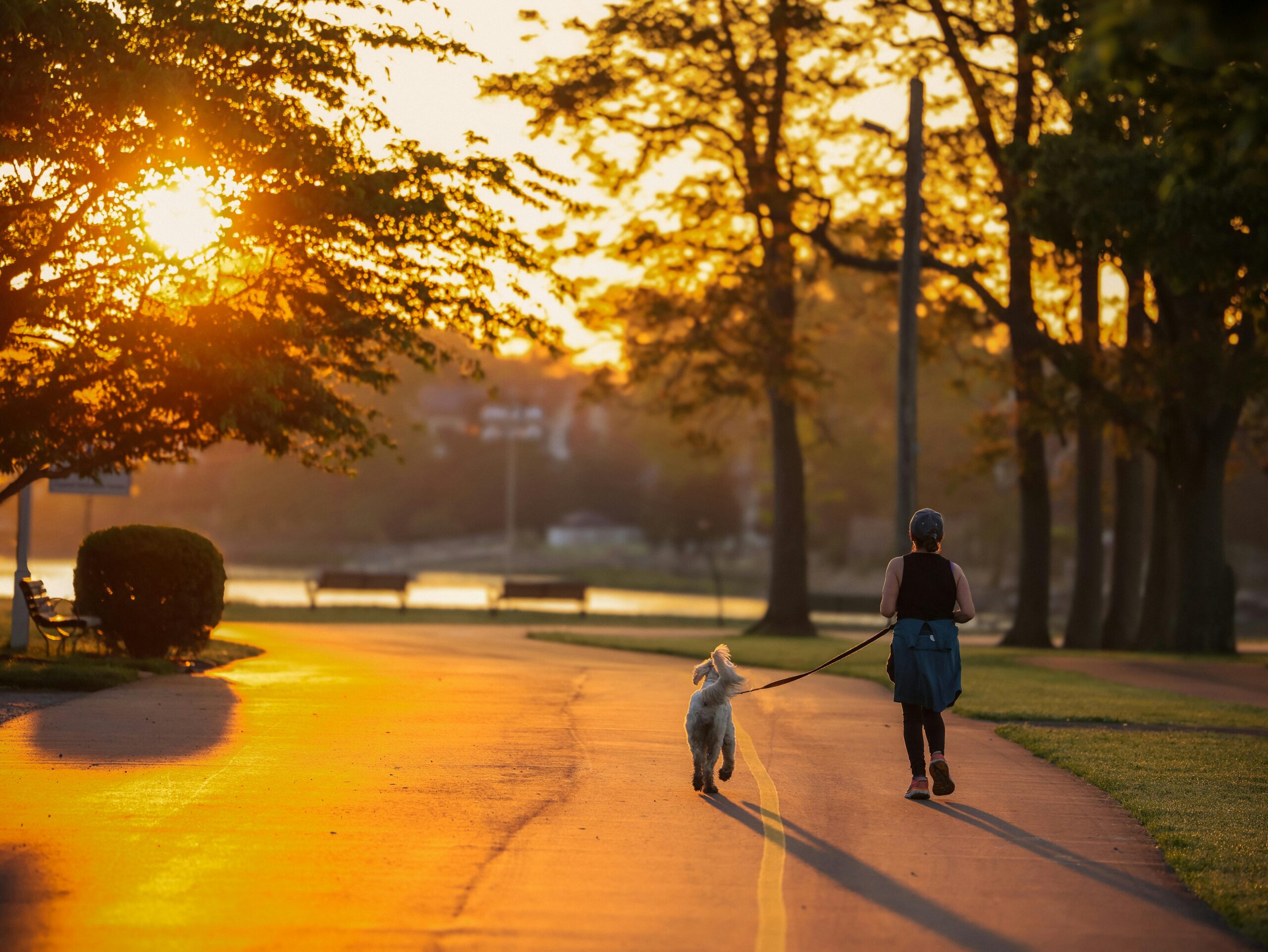Train your dog to be your running paw-tner
by Ontario SPCA and Humane Society | Dog Care Interesting | October 10, 2024

Running with your dog can be a fantastic way to stay active while bonding with your furry friend. However, it’s important to prepare both yourself and your dog for the adventure to ensure safety, enjoyment, and fitness for both parties. Here are some key considerations when training your dog to be your running paw-tner.
Assess your dog’s age, health, and fitness level
Not all dogs are suited to running. Before hitting the trail, it’s essential to consider your dog’s age, breed, and fitness level. Puppies, for example, shouldn’t run long distances as their bones and joints are still developing. Older dogs or those with joint issues, such as arthritis, might prefer a brisk walk over a long run. Consult your veterinarian to determine if your dog is healthy enough to run and how much activity is appropriate. Tailor your running plan to match your dog’s capabilities and start slowly.
Consider the running location and conditions
When planning your runs, think about the terrain and weather. Pavement can be tough on your dog’s paw pads, especially during hot summer months when the ground heats up. Grassy or dirt paths provide a gentler surface for both you and your dog to run on.
Weather conditions are another factor to consider. Hot days can lead to overheating, and cold conditions may require extra protection for your dog’s paws. Check out our blog on how to protect paws in the winter. Also, be mindful of distractions or potential hazards in the environment like squirrels, cars, or other dogs.
Prepare the right gear
Running with your dog requires some basic safety equipment. A harness is a better option than a collar as it helps distribute pressure across your dog’s body and gives you better control. A short leash will keep your dog close and reduce the chance of entanglement. Avoid retractable leashes which can be difficult to manage while running.
Don’t forget essentials like a portable water bottle to keep your dog hydrated, especially during warmer weather. If you plan to run early in the morning or at night, invest in high-visibility gear for both you and your dog. Reflective vests, leashes, and even LED collars can help you stay visible to other runners, cyclists, or vehicles.
Take breaks and monitor your dog’s condition
Your dog might not be able to communicate when they’re tired or overheating, so it’s crucial to pay attention to their body language. Watch for signs of exhaustion, like excessive panting or lagging behind. Take regular breaks to allow your dog to rest, rehydrate, and cool down. Remember, running should be fun for both of you!
These guidelines should help you be on your way to training your dog to be a great running partner. Just remember to start slow, stay safe, and always listen to your dog’s needs. Happy running!
If this information was helpful, please help us continue to educate about pet health and well-being by making a donation.
Categories
Testimonial
Thank you for looking after these animals
Thank you for looking after these animals — I would love to have them all in my house!